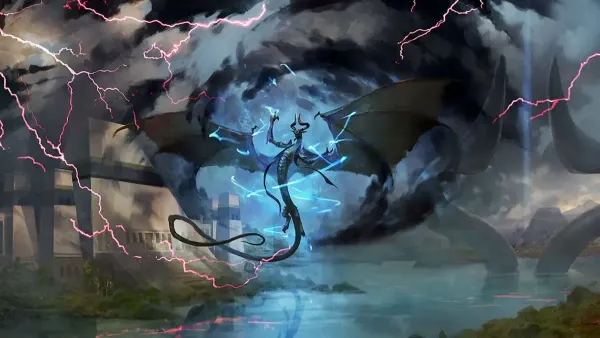The Culling Ritual
When building or updating a deck, have you ever had difficulty finding what to cut to fit within the deck limit? It can sometimes be just so overwhelming.

One method I use is one that I like to call, The Culling Ritual.
The Ritual
The Culling Ritual method emphasizes on improving deck strength and synergy. It checks whether a card will benefit a deck and is worth adding it without extensive play.

A few things to look at include:
- Deck Strategy
- Mana Cost & Value
- Versatility
- Is it a Win-More card?
- Is it an Upgrade of existing card?
A lot of what we will be looking at in this article uses techniques we have established in previous articles, including The Commander Skeleton, Refining Your Deck, and Floor and Ceiling.
Deck Strategy
A deck's strategy can greatly determine if a card will work well in your deck. Although, determining this can sometimes be very difficult.
Let's take look at a simple example of a recusion spell, Regrowth.

This spell allows a player to add any card to their hand. Very simple and straight forward. Seems like a great spell for any green deck.
Now let's say I have an Animar, Soul of Elements commander and I want to add Regrowth to the deck to help recur cards out of my graveyard.
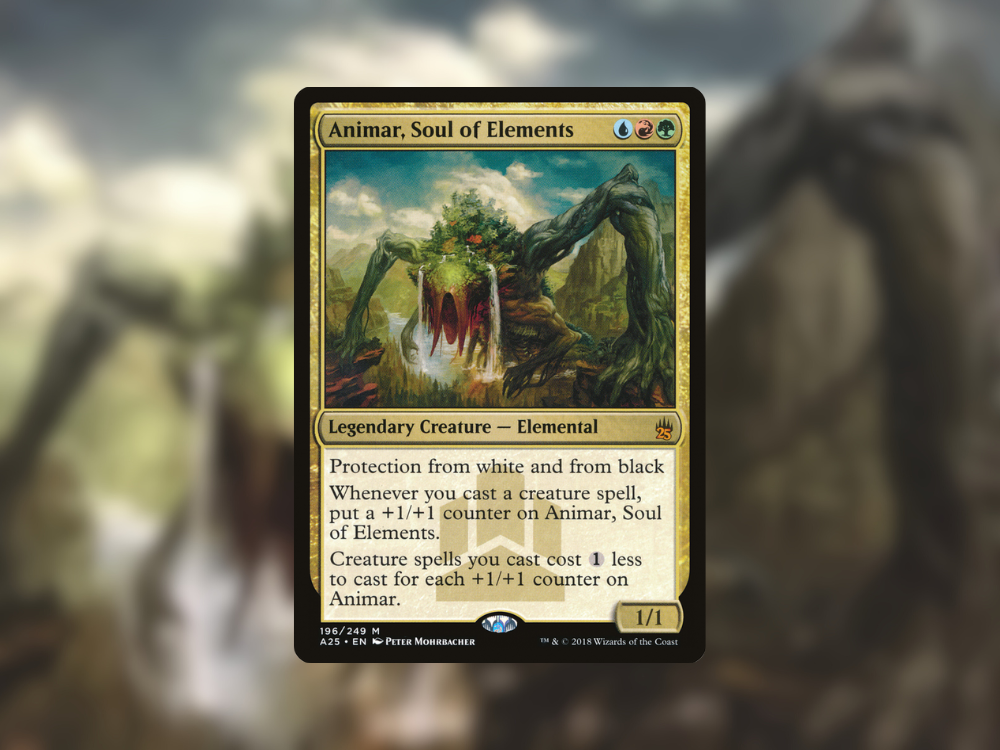
At first it may seem strong, but if we look at the strategy an Animar would use, we may have an issue.
Animar has 2 abusive abilities:
- Gain +1/+1 counters whenever we cast a creature spell, and
- Creature spells we cast cost 1 less to cast for each +1/+1 counter on Animar.
With these abilities in mind, we would prioritise creature spells in our deck.
Since Animar focuses on casting creatures, it would be best to also include a creature that does the same thing as Regrowth. Eternal Witness is a good fit as it is a recursion piece that is a creature which can have it's cost reduced by Animar while also powering up the commander itself.
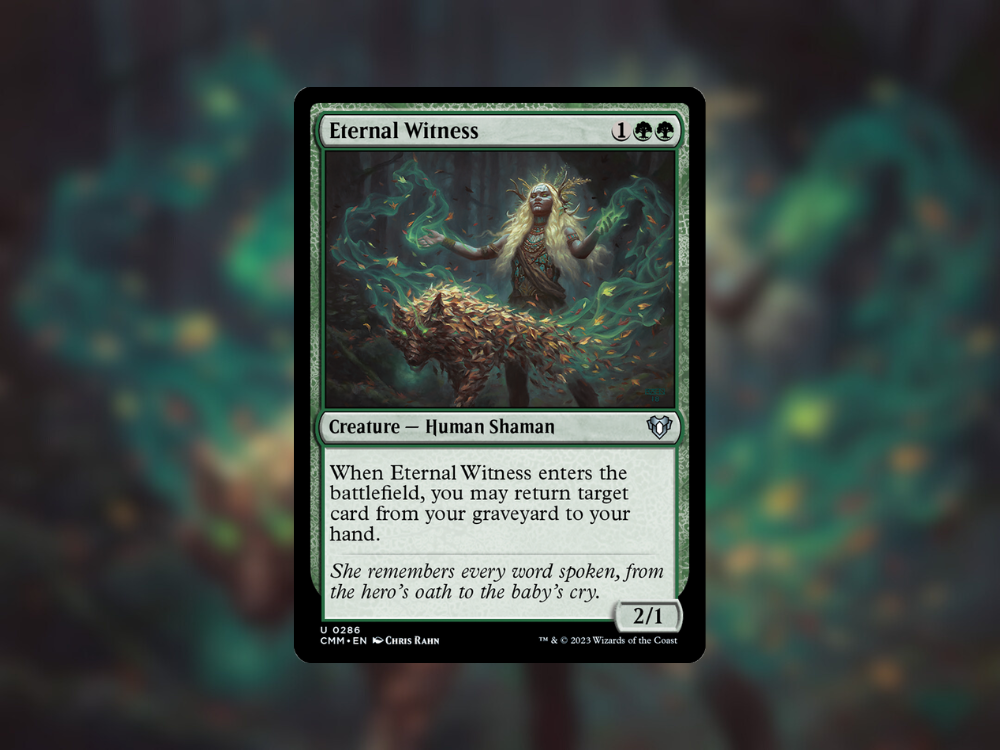
Mana Cost & Value
Next we want to check if the mana cost of a card would be a hinderance to our deck. We do this because if we draw the card in a game, we want to be able to reliably play it and not have it in our hand doing nothing.
Let's use Nyxbloom Ancient as an example.
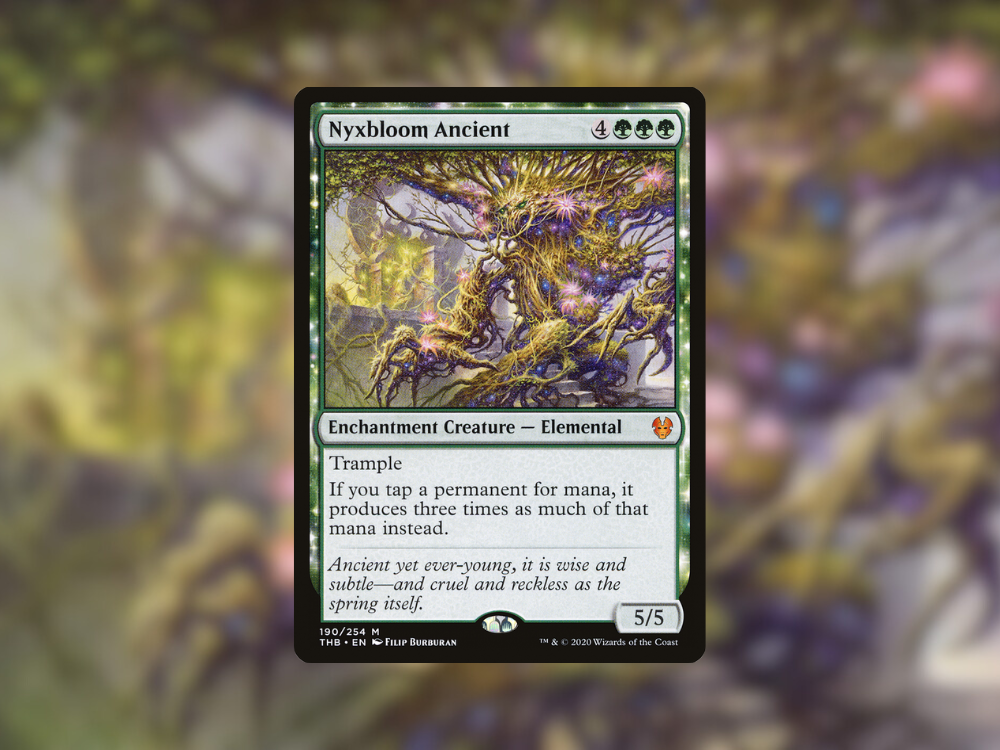
Now Nyxbloom Ancient is a very powerful card. Being able to produce triple your mana is a game-breaking mechanic.
However, it comes with a steep mana cost of 7. Depending on the deck, you could be holding this card in your hand for quite a while which can be detrimental.
Not every deck can reliably cast this card, although there is one that comes to mind.

Maelstrom Wanderer is a commander that will allow you to cascade twice for 7 or less mana spells.
To abuse what it cascades into, the deck uses cards that help setup the top of the library, whether that be scrying effects, tutors or even the classic Brainstorm. Because of this, the commander can pack high costed cards that are game breaking to cascade into for an advantage.
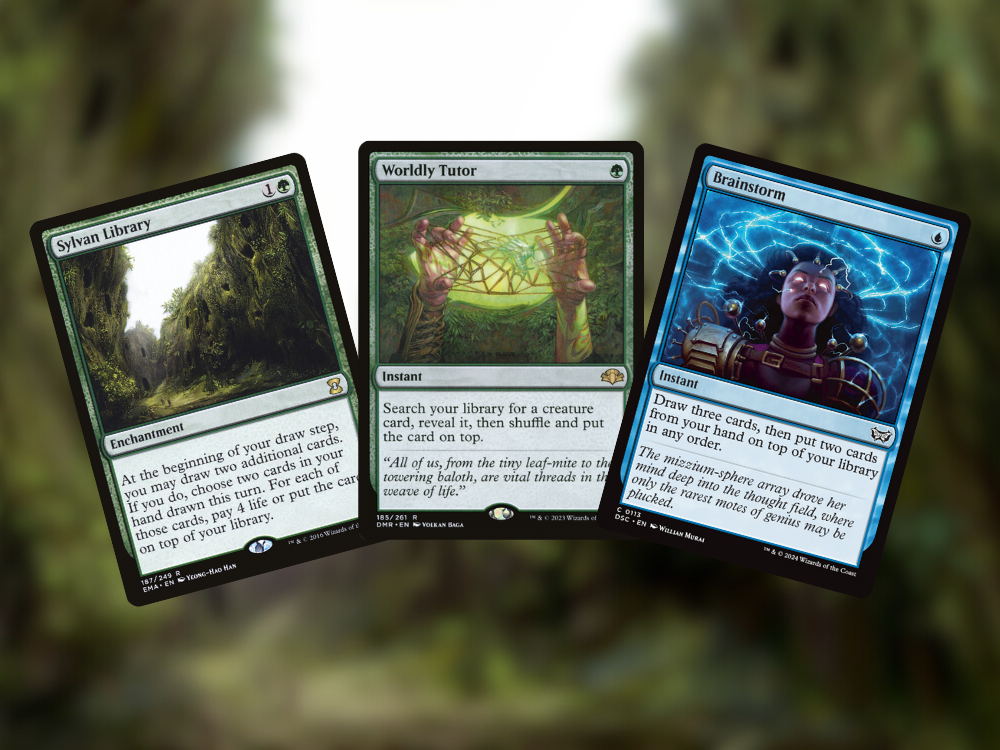
This deck is usually packing large ramp packages to reliably keep casting Maelstrom Wanderer again and again, getting more value the often your opponents remove it. This means if we added Nyxbloom Ancient to Maelstrom Wanderer, it could not only help further increase the ramp in the deck, but can be cascaded into since it is 7 mana.
Versatility
The next step is to check how versatile a card is. In commander, there will always be schenarios that you need to answers for, whether that be graveyard shenanigans, huge power swings, or game gaming ending combos to say a few.
But what counts as a versatile card? Let's use Swords to Plowshares as an example.
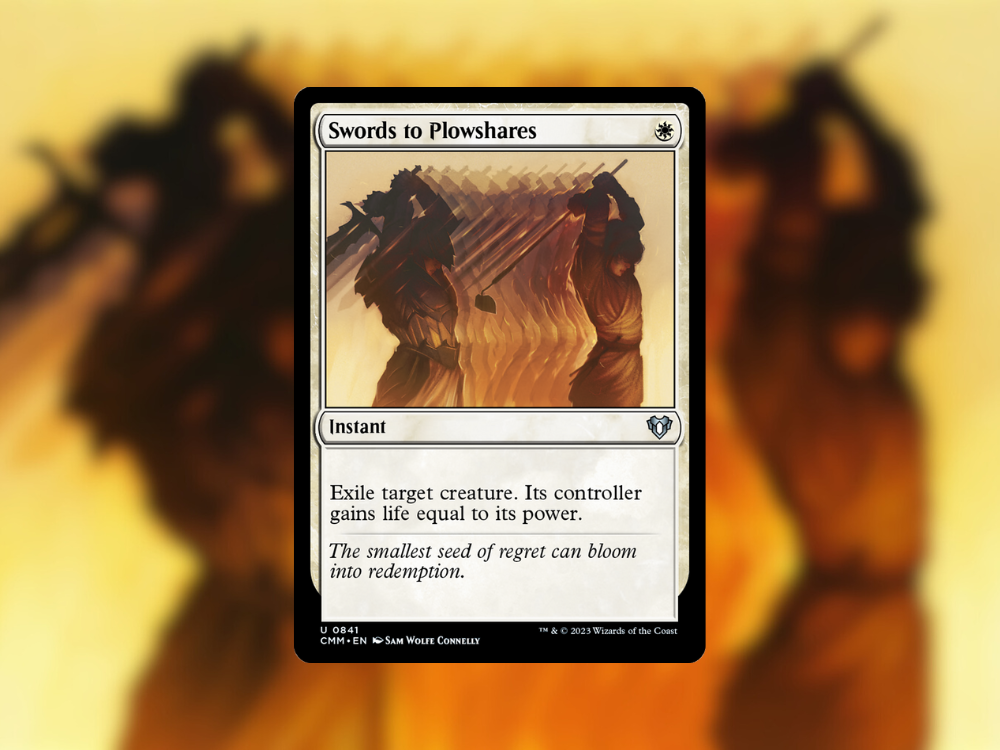
This card's core functionality is:
- Remove a creature
It's not bad, sweet and permanent, but it's really only good at removing a single creature. We could look at expanding it's reach for an additional mana. A good example is Soul Partition.

Now let's take a look at everything Soul Partition can do:
- Temporarily remove:
- a creature,
- an artifact,
- an echantment,
- a planeswalker, or
- a battle
- Replay:
- a creature,
- an artifact,
- an echantment,
- a planeswalker, or
- a battle
Soul Partition may not permanently remove a creature, but it can make it more difficult to cast, and it hits any nonland permanent. The versality of that alone gives it better use than Swords to Plowshares, being able to be used at almost any point in a game.
It also gives us the ability to target our own nonland permanents, allowing us to save them from our opponent's own effects, giving us the ability to replay them at a later time.
This is the kind of versatility I am talking about looking for when we are culling cards.
Is It a Win-More Card?
Sometimes we pick cards that we that we think will go greatly in our deck's to increase our ability to win. But sometimes that can be a trap. I like to call these "Win More"cards.
"Win More" cards look great on paper, but if you take a close l0ok at how your deck's strategy works, you may find that these cards only work when you are already winning the game.
For example, let's say you have are playing an elves deck, centered around Ezuri, Renegade Leader.
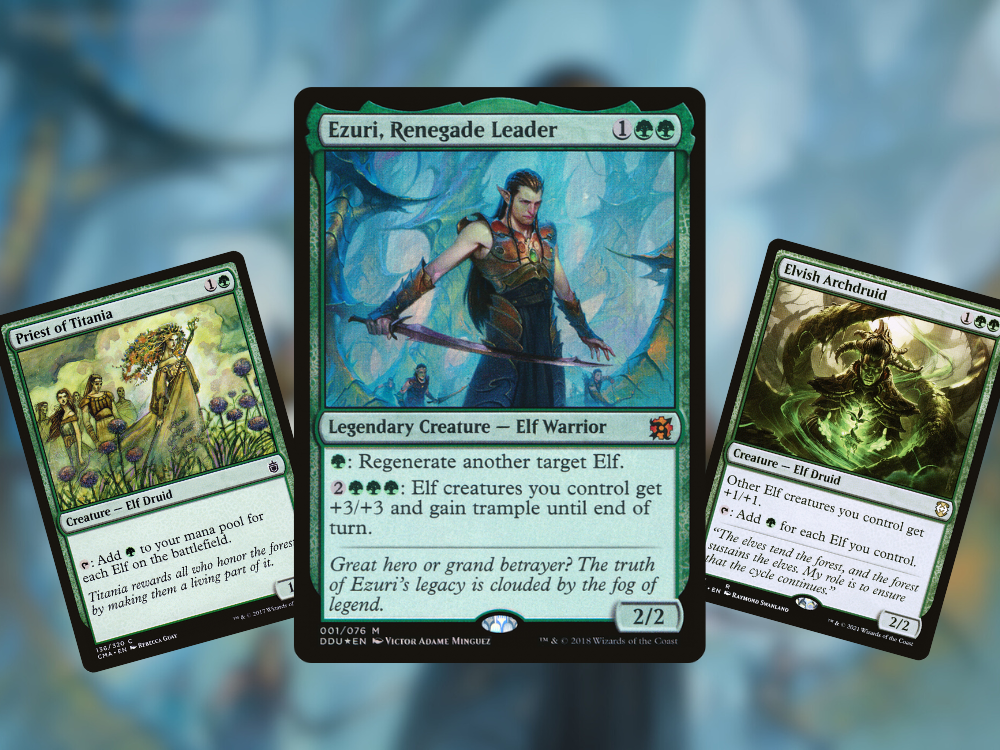
The common strategy with this commander is to stack your deck full of elves to capitalise on the tribe's ability to make mana. Then we invest that mana into Ezuri's ability, usually to alpha swing our opponents for one massive hit to win the game.
You may think adding more buff cards like Beastmaster Ascension might be a good idea, but if we evaluate how it would work with Ezuri's strategy, we can see an issue.

Beastmaster Ascension gives all your creatures +5/+5 after you've attacked with seven or more creatures, a very powerful effect.
However, Ezuri would have no need for this card. Since elves produce a lot of mana, Ezuri is more likely to invest large amounts of mana for an alpha swing to kill our opponents, meaning they would not be attacking until the time is right.
Since Ezuri already has the ability to keep buffing his tribe over and over again, a single use of +5/+5 does very little for the deck. It only helps us get an extra +5 boost to our board when we are already winning.
This is the definition of a "Win-More" card. They are very common to find when refining a deck's strategy.
Upgrade of an Existing Card
The final thing to look for when cutting cards is to check if a card is an upgrade of an already existing card in the deck.
This could be because a card might cost less mana to cast and/or be more versatile.
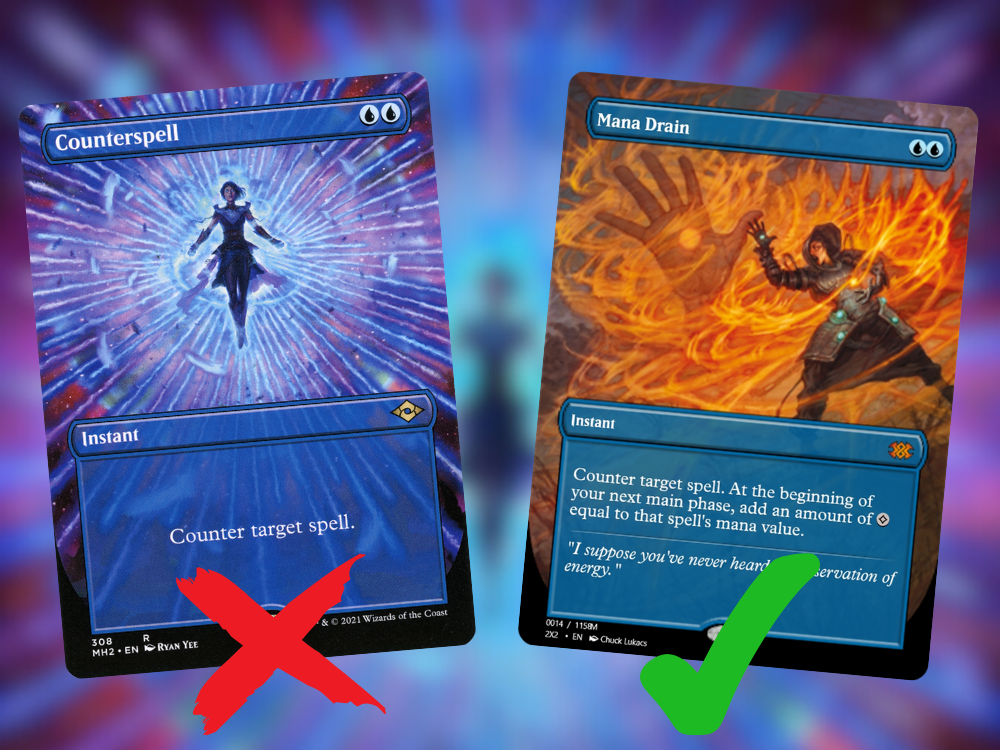
As an example, Mana Drain could replace Counterspell as an upgrade as it is not just countering a spell for the same cost, but giving you the ability to ramp later, adding versatility to your deck.
Wrapping Up
Cutting cards can be extremely difficult for deck building, but with a little critical thinking, it can be made a little easier.
Next time you are stuck cutting cards, why not give the Culling Ritual a try?




